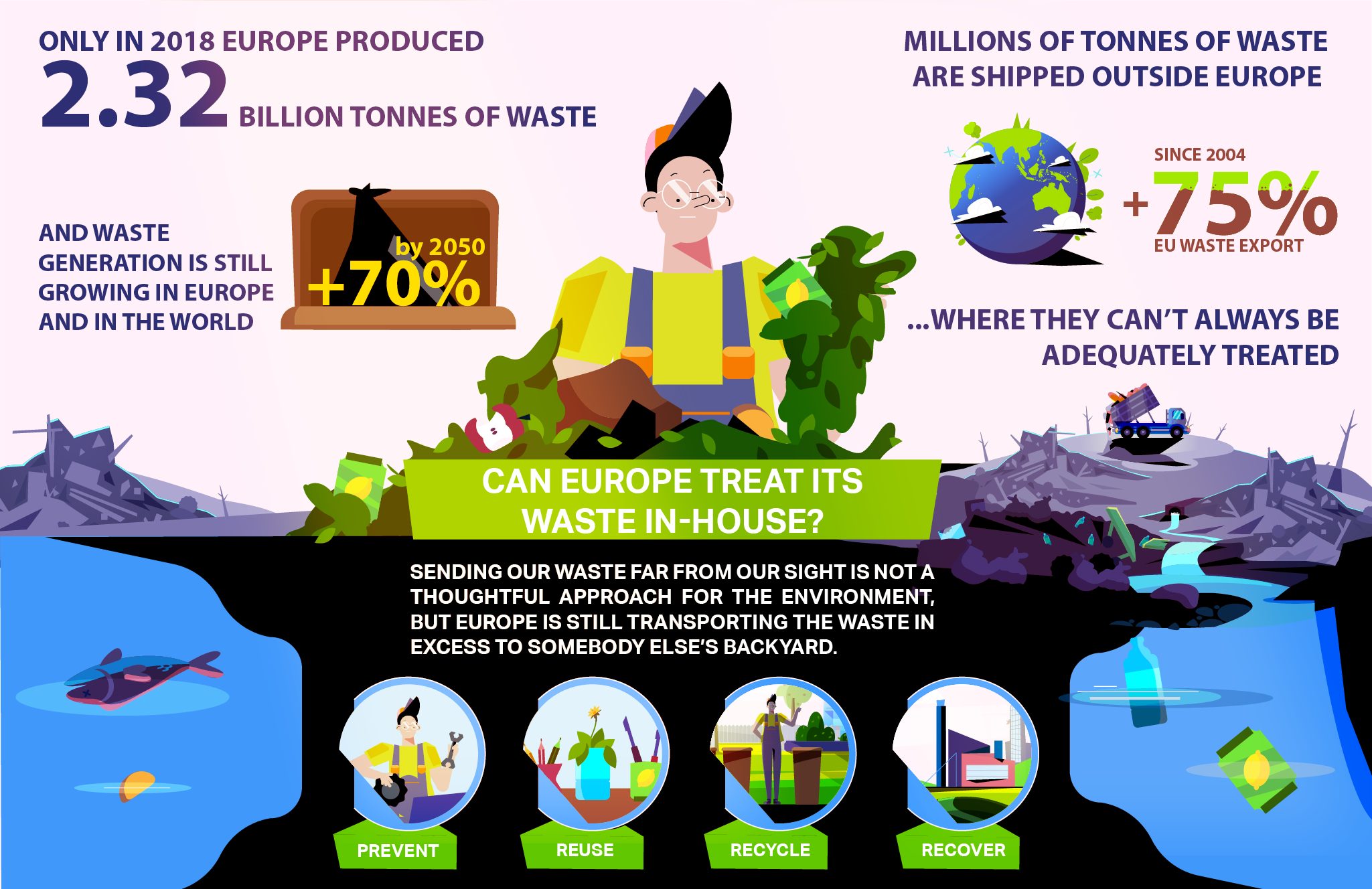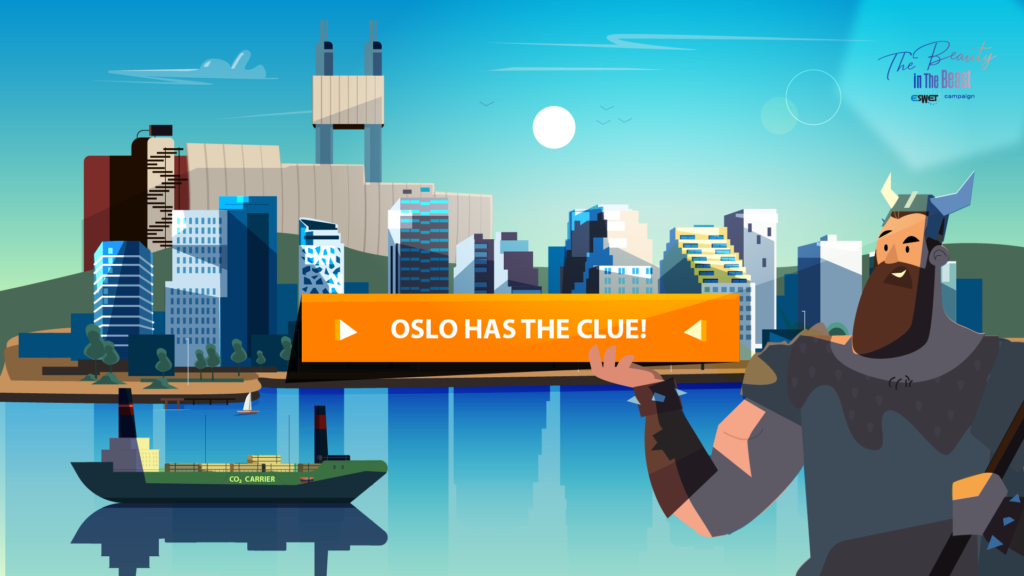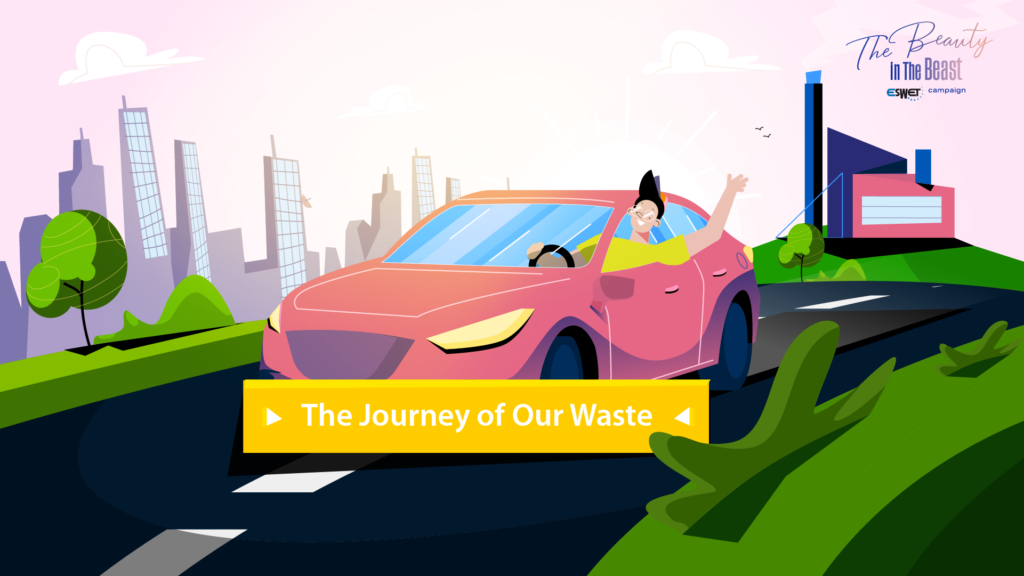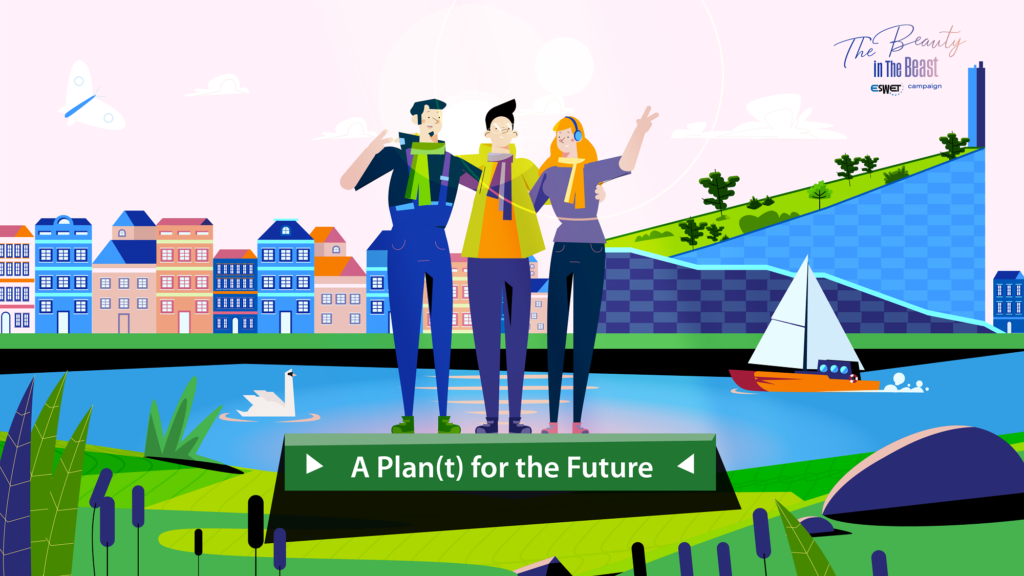Hosting outdoor parties, growing vegetables, or simply enjoying the weather on a sunny morning are small pleasures that can add a lot to our quality of life. For this reason, most people who have a garden in their homes are quite affectionate to it. But what if a person cleaning their garden disposes of their broken wooden chairs, barbecue charcoal by… throwing it over someone’s fence?
Similarly, in the last years, Europe followed a dangerous trend: transporting the waste in excess to somebody else’s backyard – with significant consequences to the environment.
What the eye does not see, the heart does not grieve
In 2018, Europe produced a total of 2.32 billion tonnes of waste from all economic activities and households. Unfortunately, as the amount of generated waste exceeds the capacity of treatment facilities within the European Union, million tonnes of waste are shipped outside the European Free Trade Area, often going as far as Southeast Asia. Since 2004, EU exports of waste to non-EU countries increased by 75%.
As recipient countries cannot always adequately treat the waste they receive: landfilling, dumping, and open burning of waste have dramatically increased, with catastrophic effects on air, soil, rivers, and seas.
Over the last decade, the EU exported millions of tonnes of waste, mostly to Turkey, Malaysia, Indonesia, Vietnam, and India. Luckily, both the sender and the receiving ends are addressing this issue. Welcomed changes are happening in the EU, where rules on plastic waste shipment have been strengthened. In parallel, following the decision of China to phase out waste imports, other countries are planning bans to stop waste-related abuses.
However, if Europe aims to stop sending its waste abroad, can it take care of it by itself?
An opportunity not to waste
As much as it’s wrong to put the burden of waste on one’s neighbours, it is also important to acknowledge that generation of waste needs to be reduced in the first place, and reuse has to be fostered as much as possible. Nevertheless, waste generation is still on the rise globally and in Europe, with previsions of a 70% worldwide increase by 2050 without urgent actions. That is why sustainable waste management is so important!
After waste reduction and reuse, recycling is the thing to do and must constantly be improved in the whole chain. Starting from the packaging of the products, passing through the correct sorting from the citizens, and ending in efficient recycling facilities.
However, even with a necessary improvement of the means described above, not all the waste we generate today is avoidable, reusable or recyclable. It may be because the waste contains pollutants, because it is degraded after many recycling cycles, or even because its design makes it difficult to recycle properly. Today, in Europe, this non-recyclable waste still accounts for around half of the total municipal solid waste generated.
That is why Waste-to-Energy represents a further step in the circular economy chain: it is complementary to recycling, and it allows to minimise landfills and sanitise non-recyclable waste, avoiding related environmental pollution and its impact on health. In return, Waste-to-Energy plants recover energy (electricity, heat, and steam) and materials (iron, aluminium, copper, steel, and even silver and gold).
Sending our waste far from our sight will never be a thoughtful approach for the environment. Together with waste prevention, we have to ensure that all the sustainable waste management options are in place to take responsibility for our own waste, here in Europe and under EU standards.
As we wouldn’t dare to pollute a neighbour’s garden with our waste, let’s campaign for sustainable choices that keep everyone’s air, lands, and oceans clean!





